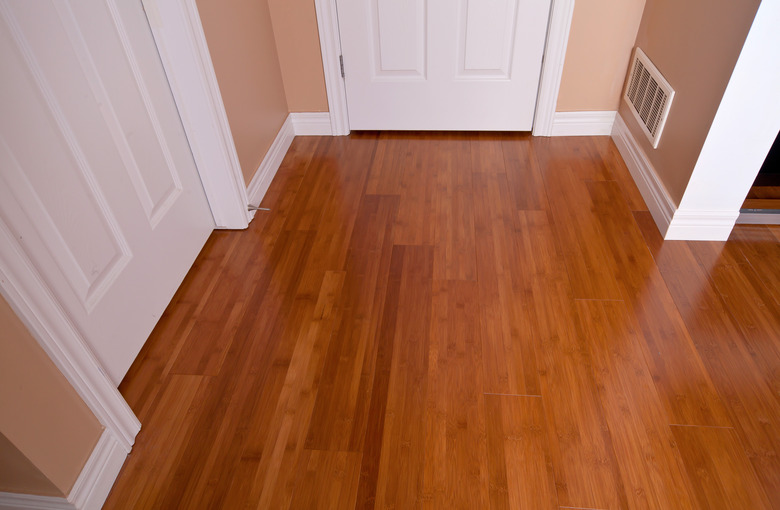How To Stagger Bamboo Flooring
We may receive a commission on purchases made from links.
Bamboo is a beautiful alternative to traditional hardwood flooring. Like hardwood flooring, bamboo floor planks need to be staggered from one row to the next. It might seem intimidating, but staggering the planks isn't difficult with bamboo flooring tips and tricks to help.
Basic Bamboo Flooring Installation
Basic Bamboo Flooring Installation
Before you learn about staggering the bamboo flooring, it's a good idea to understand the basic installation process. There are different types of bamboo floors, including floating floors and nail-down bamboo floors. Click-together bamboo floors are similar to laminate flooring, with a tongue-and-groove design that lets them snap together easily. Some floating bamboo floors have to be glued together. The most difficult installation is the glue-down or nail-down bamboo floor, and this type is often best left to professionals.
No matter what type you choose, bamboo flooring installation starts with a sturdy, level subfloor. You typically lay the flooring parallel to the longest wall of the room, but you can also run it parallel to a focal point in your room, such as a bay window or fireplace. The planks start along one wall, with subsequent rows butting up against the previous rows. You work from left to right, completing one row before moving to the next and offsetting the joints on each row.
Bamboo Flooring Variations
Bamboo Flooring Variations
Flooring products like Cali Bamboo flooring are made from natural materials, which means the pieces have variations in color and patterning. You should remove the flooring from the packaging and let it acclimate for a minimum of 48 hours. Having all of the flooring out of the package also makes it easier to mix and match the boards from different packaging. Pull from different packages to mix up the planks and create a visually pleasing arrangement, taking the natural color and pattern variations into consideration.
Staggering the End Joints
Staggering the End Joints
When you install your bamboo flooring, you should offset the end joints from one row to the next by a minimum of 6 inches. Wider floor planks often look better with a larger stagger. Refer to your flooring product's instructions to find the recommended offset amount. For the best look, have at least two rows before you repeat an end joint location. In other words, you shouldn't align the end joints of every other row.
Avoid Noticeable Patterns
Avoid Noticeable Patterns
It can be easy to fall into patterns when aligning your boards. One common trap is the H pattern where the joints align on every other row. The planks are the same length, and you offset each row by a half of a plank length. This results in an H-type pattern that looks too planned.
As you're creating your layout, make sure the end joints are staggered randomly for the best look. Test each row to ensure the end joints will be random and won't create a noticeable pattern with the previous rows. Monitor the alignment across the room so you don't fall into a pattern as you go.
Cutting Engineered Bamboo Flooring
Cutting Engineered Bamboo Flooring
When cutting engineered bamboo flooring or solid bamboo flooring, measure the room well before cutting to minimize waste. Placing a piece of painter's tape over the line where you plan to cut can prevent the bamboo flooring from splintering. Use a finishing blade with a minimum of 70 teeth to get a clean cut.
When you reach the end of the row, you'll need to cut the last board to fit the remaining space. A good way to offset the next row is to use the remaining length as the first plank for the next row. Say you're working with 36-inch planks and the last piece in the first row is 12 inches long, leaving you with a 24-inch plank. Start your second row with that 24-inch section to start the staggering for the second row.
